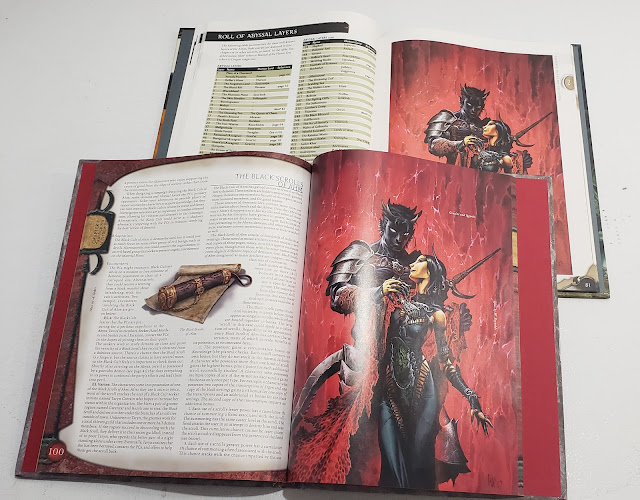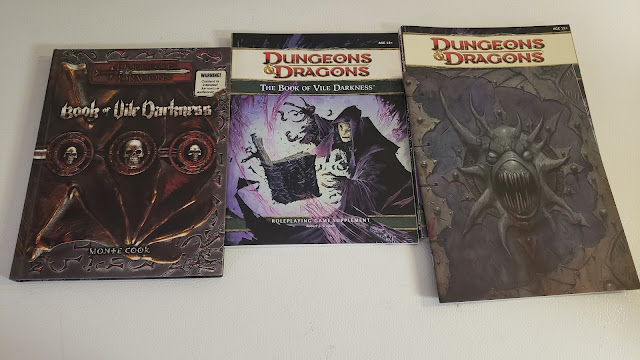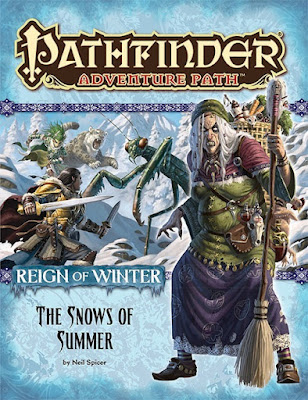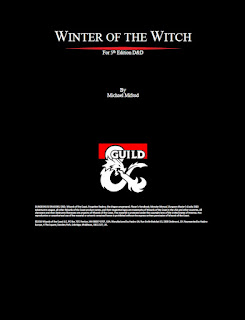I have spent the past year or so going through all the various D&D monster books. Seeing what makes them work well and what doesn't. My homage, as it is, to the book that introduced me to D&D in the beginning.
Today I want to cover some of my favorite creatures to use (and pit players against) demons.
Demons, as D&D describes them, are Chaotic and Evil. But more than that they are of unrepentant evil. You never hear of demons becoming good, ever. So rare that when it does happen, it becomes a thing of legend.
It also means that the only appropriate way to deal with a demon is to send it screaming back to the Abyss from where it came.
So if 2nd Ed AD&D was the golden age of Settings. Then 3rd and 4th Ed D&D was the golden age of fluff and story. Here I have some books about Demons and the Abyss with details that are still in use in 5th Edition today.
Fiendish Codex I: Hordes of the Abyss (D&D 3.5)
PDF and hardcover. 162 pages. Color covers and interior art.
Published in 2006 this product had three aims. First, update all the various demons to the 3.5 D&D rules. Second, introduce new rules about the Abyss and new demons. Finally to provide a more "PG" sort of book rather than the "R" rated Book of Vile Darkness. This book expands on everything we know so far. Indeed for a chaotic race, the power structure of the Abyss has been in place since the introduction of Eldritch Wizardry 30 years prior.
This book gives us the notion, likely introduced in the 2nd E and I may have missed it, that demons are spawned from the Abyss itself, which may also be alive.
Chapter 1: Demonic Lore
This covers what is currently known about demons and the Abyss. It also introduces a new source of demonic knowledge, the Black Scrolls of Ahm. We get a bit on demonic physiology, in this case, a dretch, though it is also noted this can vary from demon to demon. A bit on the nature of death in demons. Demonic roles and possession.
Chapter 2: Demons
Ah. Now I was one of the first ones to complain about the bowdlerization of Demons into Tanar'ri during the AD&D 2nd days. D&D 3rd Edition kept them, but also kept demons. Here is the payoff for them doing that. Tanar'ri are but one of three (in this book) types of demons. Green Ronin began this with their demon books early one and I even did it back at the end of my 2nd Ed days. It is a natural and logical assumption in my mind. And one I am glad to see here. The two new types are Loumara subtype (a new type of demon) and the Obyrith (an ancient, primeval type of demon). Each has different traits. So now demons are listed as something like "Always CE Medium outsider (chaotic, evil, extraplanar, tanar'ri)" or similar. There are still chaotic evil monsters in the abyss that are not any of the three demon sub-types.
Among the Loumara we have: Dybbuk, Ekolid, and Guecubu. For the Obyriths we have the Sibriex. There are more Obyrith lords coming up.
Chapter 3: Demon Lords
Here we have names going all the way back to the beginning, but all updated. The art for Demogorgon reminds me of the cover of Eldritch Wizardry. There are plenty of old favorites here. As well as plenty of new and somewhat revised ones. There are Obyrith lords like Dagon, Obox-ob, Pale Night, and Pazuzu. Dagon has had an interesting history in D&D due to the god, devil, and Lovecraftian creature that all share the same name. This Dagon tries to, and largely succeeds in, uniting all three into one horrible creature.
Chapter 4: Trafficking with Demons
Deals with demonic followers, both human and demon. It's 3.x so there are feats to be had here! There are also new spells and uses for skills. We are introduced to the Black Cult of Ahm and their lore including the various scrolls of Ahm. There is the Abyssal Mundus, the Black Writings, and the Rubric of Tulket nor Ahm. There is also the Transcriptions of Ergon, rumored to be an apprentice to Tulket nor Ahm.
Chapter 5: Into the Abyss
I mentioned this was a golden age of story and fluff, this chapter is a good example. We get a brief history of the Abyss, the various demon types, and of course The Blood War. We also get details on various Abyssal layers and areas. We get Graz'zt capital of Zeltar which exists on three layers simultaneously. The infamous Demonweb, Orcus' layer of Thanatos, and many more.
Appendix I covers all the lords of the Abyss, their titles, areas of concern, and their layers. Appendix II covers the known named layers of the Abyss and their rulers. Appendix III covers demonic monsters from other 3.x books.
Even if you are not playing 3.x or any system similar to it, this is still a great book on demons.
The Plane Below: Secrets of the Elemental Chaos (4e)PDF and hardcover. 162 pages. Color covers and interior art.
This book also expands on demonic lore. This time for 4e. Though this book also expands on various chaotic and elemental forces. Making the connections between the Abyss and elemental chaos stronger.
This is divided in five chapters.
Chapter 1: Chaos Incarnate
This chapter covers the nature of the Elemental Chaos of the Astral Plane. You can see the start here of why Wizards of the Coast is setting Spelljamer in the Astral and not Wildspace. It makes sense. This deals with the nature of chaos, traveling in it, and features of the plane including hazards and various skill challenges.
For warlocks, there are even three new Patrons. And "new" cults like the Cult of the Elder Elemental Eye. And "new" artifacts like the Crystal of Ebon Flame.
Chapter 2: Races of Chaos
This covers Archons, Djinn, Efreets, Genasi, Giants and Titans, Githzerai, Slaad, and brief entries on others like Dao, Dwarves, and Primoridals. No stats, all background information.
Chapter 3: Elemental Locales
Various important locales in the Elemental Chaos. These include The Brazen Bazaar, Canaughlin Bog, Gloamnull the City of Rain, Irdoc Morda, the Pillars of Creation, The Riverweb, the Glittering Mine (with encounters), and The Body Luminous (with adventure). Save for the last two there is only minor game-related details. So use in any game would work.
Chapter 4: Into the Abyss
Same title as Chapter 5 of Fiendish Codex I: Hordes of the Abyss this covers similar ground. Travel and hazards of the Abyss, the so-called "bottom" of the infinite elemental chaos. We get a listing fo demons from other 4e books and ideas for adventures and skill challenges.
Some demonic locations are given and these are for the most part different than what we have had before.
Chapter 5: Creatures of Chaos
Now, this is the reason I pulled this one out for today. We get new oozes, new archons, and of course new demons. There are mostly elemental creatures here and chaotic ones like Slaad who are largely chaotic evil here. There are some unique creatures as well including Ygorl the Lord of Entropy.
Demonomicon (4e)PDF and hardcover. 160 pages. Color covers and interior art.
Easily one of my favorite D&D 4e books. This one presages the 5e books with excerpts from the infamous Demonomicon of Iggwilv.
This one has three chapters, but each one is packed.
Chapter 1: Demonic Lore
Here get the introduction to the Demonomicon of Iggwilv, its history and its special features. We learn the first of six volumes titled the Demonomicon of Iggwilv was based on an earlier work, the Tome of Zyx. What follows is said to be from these tomes.
We go back to the birth of the Abyss with the Obyriths coming into this universe from their dying one. Here Tharizdun planted the "Seed of Evil" into the Astral Sea and from it, a tear in reality opened creating the Abyss. Here we learn that an ancient Primordial came to the Abyss to become one of the first Demons, he became known as Demogorgon. Here Dagon, an Obyrith, challenged Demogorgon for control while Obox-ob claimed the seed and became the first Demon Prince.
Here in this Dawn Time, the Cult of Elemental Evil was formed. Demons rose, Angels fell and soon even Tharizdun fell and was chained. Here we get the start of the Blood War.
Much like the Fiendish Codex I: Hordes of the Abyss we get some details on Fiendish physiology. Most notable is how demons adapt to their environments by changing their physiology. We cover topics of demonic possession, demonic ascension, lords, cults, summoning demons (with one reused bit of art), and legions. There are legions for every demon lord but only a few are detailed here.
Quite a bit of material here that feels like an expansion of the material that came before it.
Likewise, there is some reused art, but it is good art so I can't complain.
Chapter 2: The Abyss
This one covers the nature of the Abyss, expanding on what the Elemental Chaos book covered. Many layers are also covered, most getting a few pages of content. Graz'zt layer of Azzagrat gets some detail. While some of this is familiar to readers of Fiendish Codex I: Hordes of the Abyss it also provides new details and different information. This is true for some other layers as well.
There are also minor realms and Abyssal portals, delves, and temples. Some with encounter information.
Chapter 3: Demons
There are 45 new abyssal monsters here which are mostly demons (Tanar'ri and Obyrith) and a few Demon Lords not covered in the Monster Manuals.
If you are playing 4e and dealing with demons (which many of the adventures do) then this is really a must-have book. If you like the history of demons in D&D then this is also a must-have.
--
All three add to the sum total knowledge of demons in D&D. Having the PDFs I am tempted to print out the fluff sections and add them to a guide of demons I have had since the 2nd Edition days.
Maybe D&D is about demons after all?



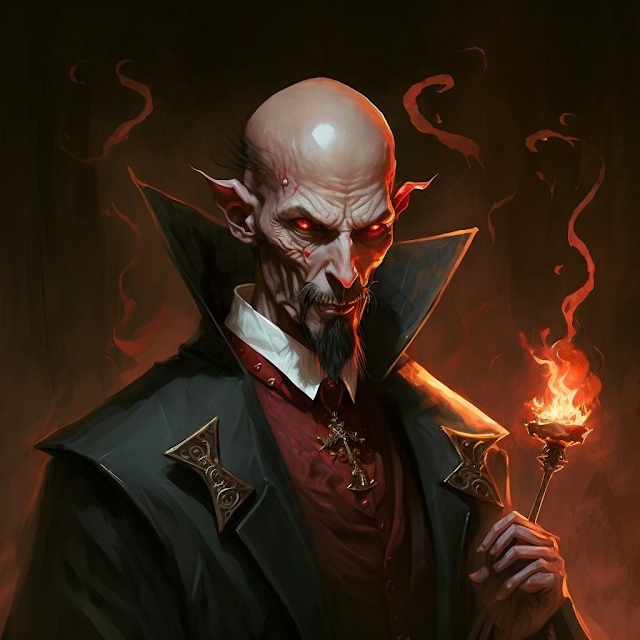

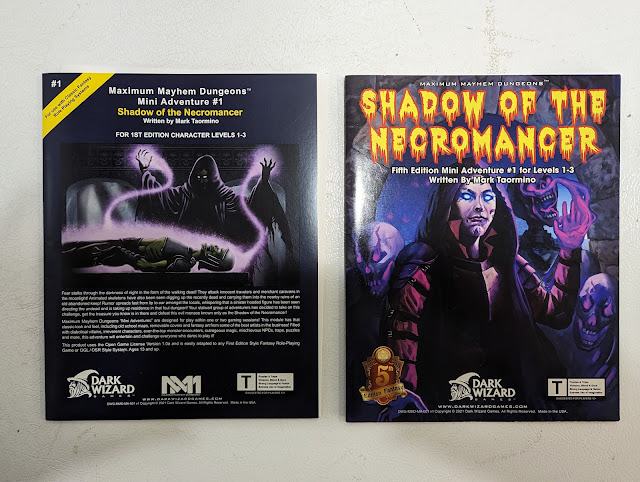

.jpg)




.jpg)
.jpg)
